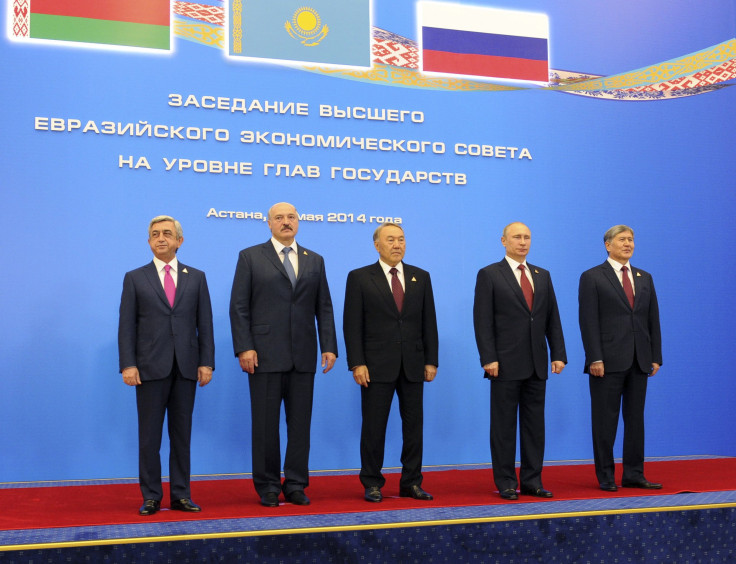No Ukraine: Putin's Eurasian Union Reveals Limits to Russia's Strength

When the leaders of Russia, Kazakhstan and Belarus announced Thursday that they had finalized the Eurasian Union, a new trade bloc linking the three countries, Russian president Vladimir Putin described the deal in grand terms: "Our meeting today of course has a special and, without exaggeration, an epoch-making significance."
What Putin didn't say -- and may not want to admit -- is that the ultimate importance of the bloc may depend on the fate of a country it doesn’t include: Ukraine.
Large in scope, the Eurasian Union brings together three countries with a combined population of 170 million people and a GDP of $2.7 trillion. (By contrast, the European Union’s 28 member states have a combined population of 505 million and a GDP of $16.7 trillion.) Russia and Kazakhstan are also energy rich, together accounting for 15 percent of global oil reserves as well as significant amounts of natural gas. The trade bloc -- alongside a separate Russian agreement to ship 38 billion cubic meters of natural gas to China beginning in 2018 -- represents a shift in economic strategy for the country: in effect, Russia’s pivot to Asia.
Although the Eurasian Union draws its origins from Kazakhstan -- it was first proposed by the the country’s president-for-life Nursultan Nazarbayev in a 1994 speech -- the bloc has emerged as a central part of Vladimir Putin’s plan to keep ex-Soviet states within Russia’s sphere of influence. This approach has occasionally sparked conflict; not least in Ukraine, where the collapse of a pro-Russian regime this February led Moscow to forcibly annex Crimea in April. In 2008, Russia fought a brief war with the Republic of Georgia, where a pro-American regime attempted to seize the Russian enclave of South Ossetia.
Twenty-three years after its dissolution, the Soviet Union continues to hold major symbolic significance for Russia. Putin has often referred to the Soviet collapse as a great tragedy for his country, which then endured a series of painful market reforms during the 1990s.
Does the Eurasian Union represent Putin’s effort to restore Russia’s past glory? Hillary Clinton thinks so. In a speech in March, the former U.S. secretary of state said that Putin’s “political vision is of greater Russia,” and that his goal is to “re-Sovietize Russia’s periphery.”
Whether or not Putin succeeds in realizing this vision, the Eurasian Union marks a significant step. Armenia and Kyrgyzstan, who attended the deal’s signing as observers, have signaled their intention to join. But the absence of Ukraine -- whose population of 55 million makes it the second-largest ex-Soviet state, after Russia itself -- represents the limit of Putin’s approach. Although the country’s new president, billionaire Petro Poroshenko, has sworn to improve relations with Moscow, Ukraine is not likely to join a Russian-led economic union.
Even the two countries who reached the agreement with Russia -- Kazakhstan and Belarus -- have expressed some unease with their new partner. Kazakhstan flatly refused to consider political union, saying in March that it “could not be in a union with an occupying state,” while Belarus’ Alexander Lukashenko, who has governed his country since independence, noted his disappointment at Ukraine’s absence from the union and accused Russia of setting “a bad precedent” in its annexation of Crimea.
© Copyright IBTimes 2024. All rights reserved.






















